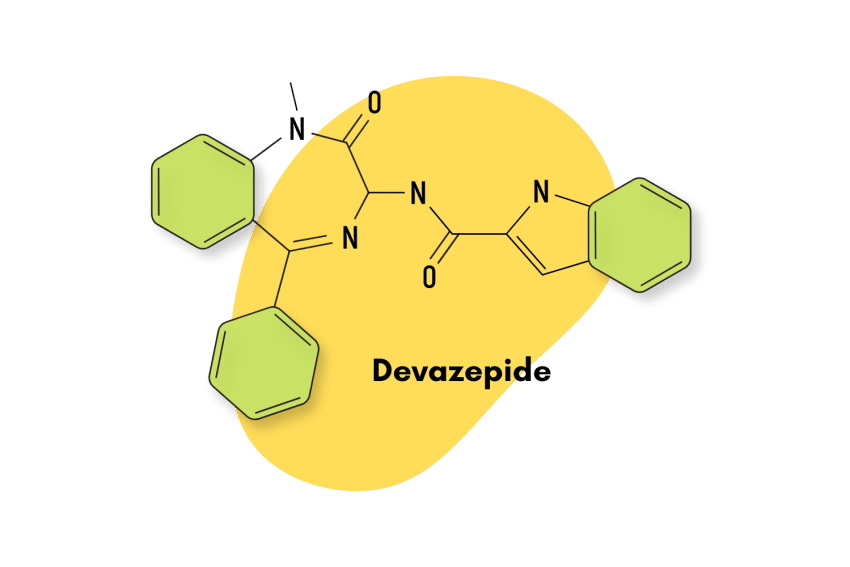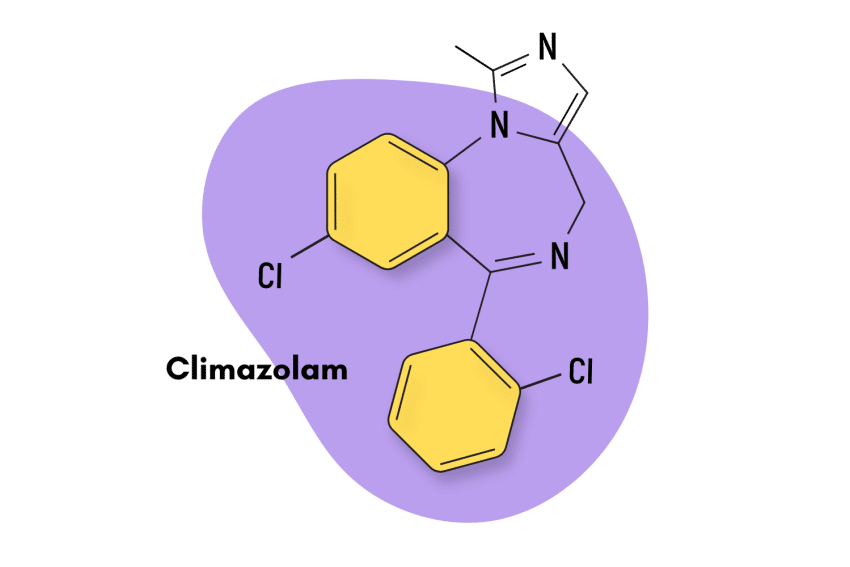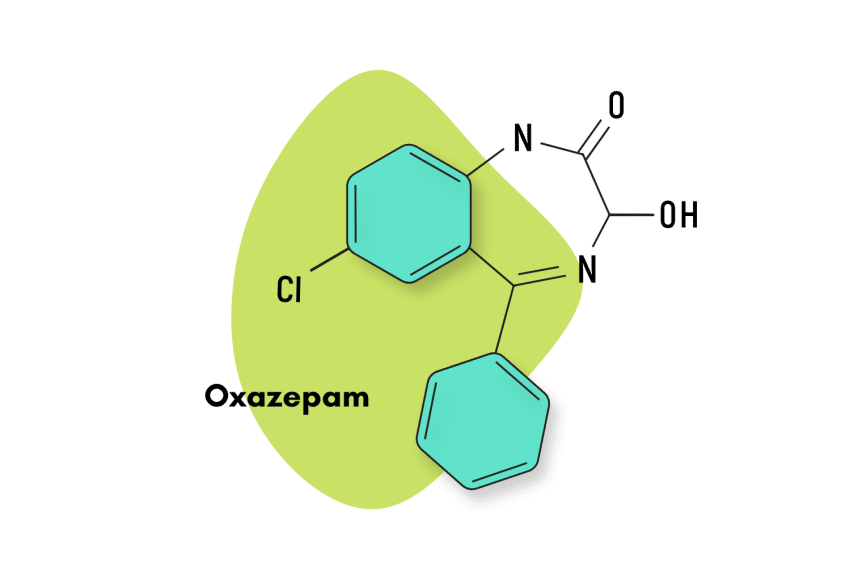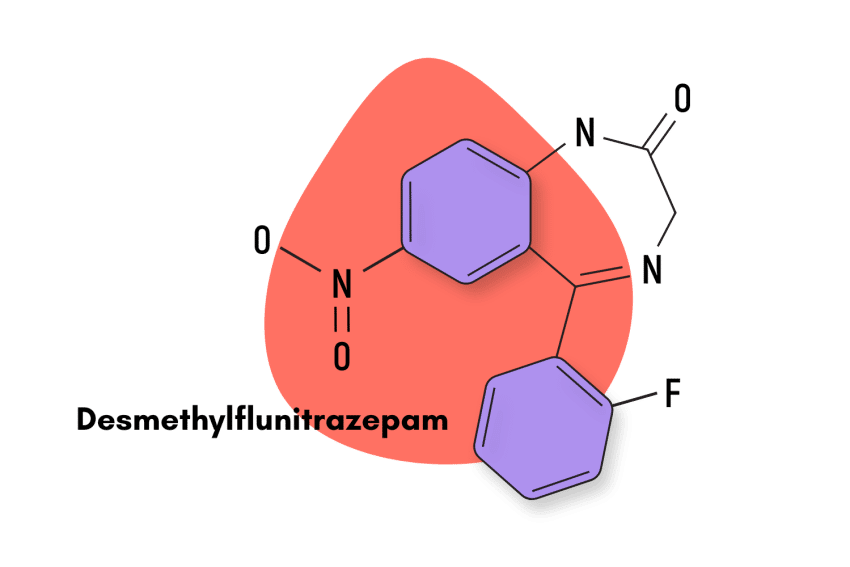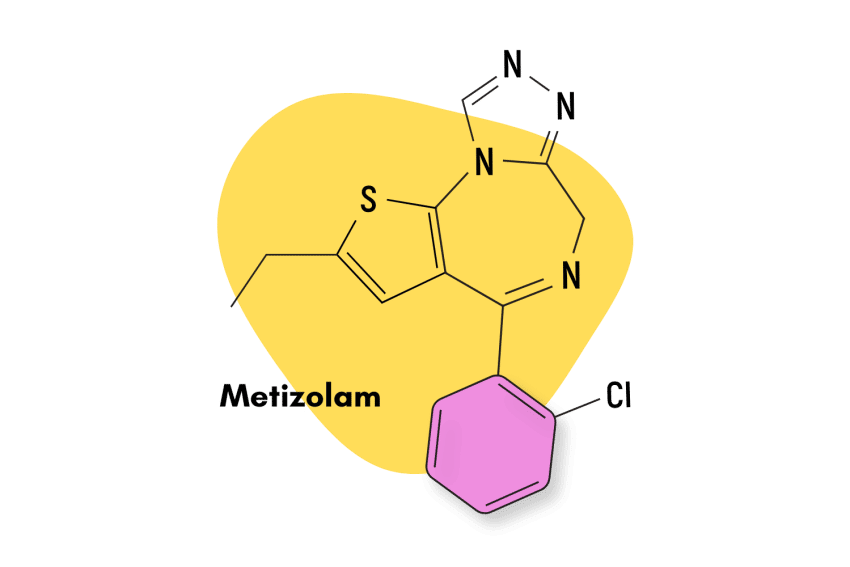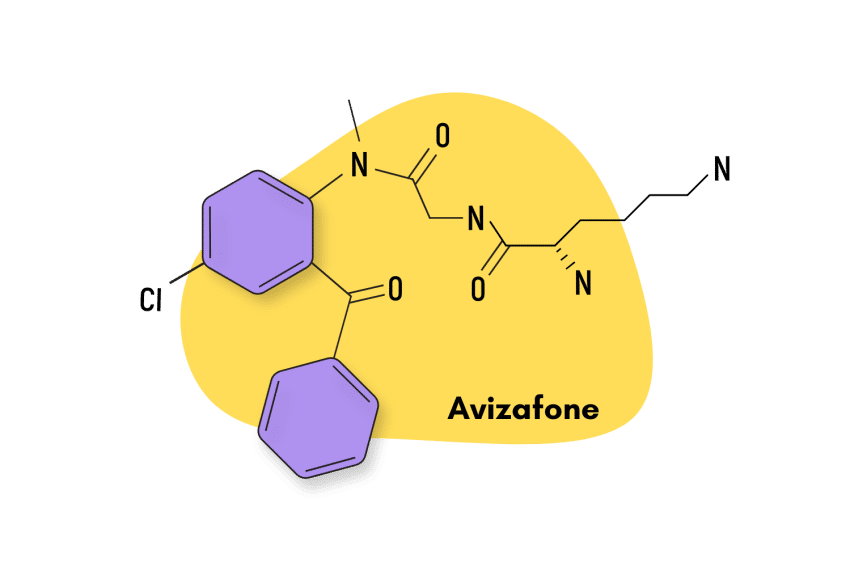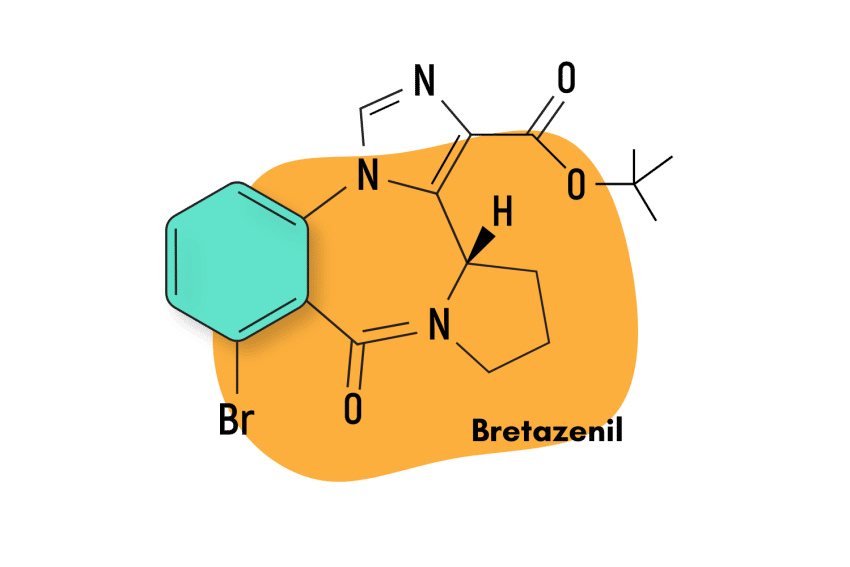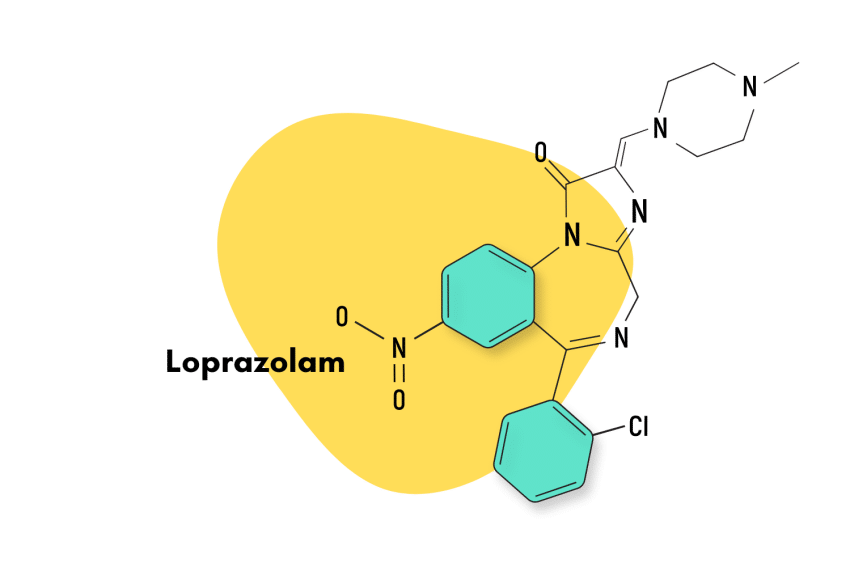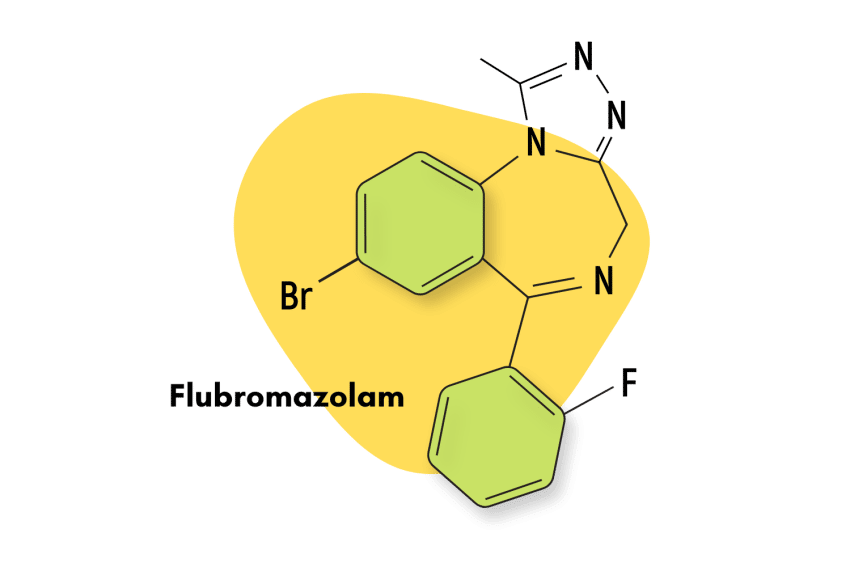Cloxazolam Fact Sheet: Benefits, Risks, & Harm Reduction Guide
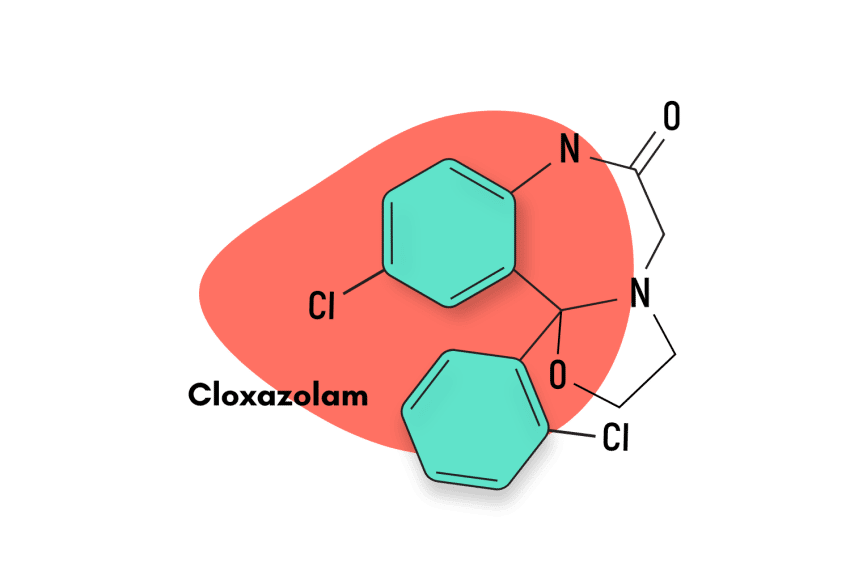
Cloxazolam is a benzodiazepine drug marketed in Argentina, Australia, Portugal, Belgium, Switzerland, Luxembourg, Germany, Taiwan, and Japan for anxiety disorders.
It’s also used off-label for muscle spasms, sleep disorders, and seizure disorders.
The usual dose of the drug is 3 to 12 mg per day for anxiety disorders. Higher doses may be needed to manage seizure disorders.
Studies have shown that 4 mg per day of cloxazolam is more effective than 12 mg bromazepam in the treatment of anxiety, depression, and sleep disorders [1].
Here, we’ll cover cloxazolam in detail. We’ll explore this drug’s safety and side effects profiles, discuss how it works, and offer some potential alternatives to consider using instead.
Cloxazolam Specs:
| Status: | Approved In Select Countries |
| Common Dosage: | 1–4 mg |
| PubChem ID: | 2816 |
IUPAC Name: 13-chloro-2-(2-chlorophenyl)-3-oxa-6,9-diazatricyclo[8.4.0.0^{2,6}]tetradeca-1(10),11,13-trien-8-one
Metabolism:
The metabolism of cloxazolam takes place in the liver and is biotransformed into an active metabolite, chlordesmethyldiazepam (delorazepam).
The active metabolites are later biotransformed into inactive metabolites by the cytochrome P450 enzymes, including the CYP3A4 enzyme. Both the parent compound and active metabolite are removed by the kidney.
How Long Does Cloxazolam Last?
Cloxazolam is characterized as a long-acting benzodiazepine with a half-life of around 65 hours. This means cloxazolam could remain in the bloodstream for up to 2 weeks.
The effects of cloxazolam usually kick in within 1 hour and remain active for 12–24 hours.
What Is The Dose Of Cloxazolam?
The dose of cloxazolam for anxiety disorders ranges from 3 to 12 mg per day. Everybody reacts differently to benzodiazepines, so doctors usually begin with a lower dose and increase it only if needed.
Benzodiazepines lead to the formation of tolerance in a relatively short period of time. As tolerance forms, users need to gradually increase doses of the drug to receive the same level of effects.
For epilepsy, doses between 15 and 30 are generally used instead. This drug is normally found in tablet forms with doses standardized to 1 mg, 2 mg, and 4 mg each.
Benzodiazepine Equivalency Calculator
**Caution:** Benzodiazepines have a narrow therapeutic window. Dose equivalents may not be accurate in higher doses.
This calculator does not substitute for clinical experience and is meant to serve only as a reference for determining oral benzodiazepine equivalence.
Please consult a medical practitioner before taking benzodiazepines.
How Does Cloxazolam Work?
Cloxazolam, like most other benzodiazepines, works by potentiating a naturally-occurring neurotransmitter called GABA.
GABA is the body’s primary neuroinhibitory messenger. It binds to GABA receptors to inhibit electrical transmission. This results in reduced anxiety levels, sedation, and reduced seizure frequency [3].
Cloxazolam doesn’t directly activate GABA receptors — rather, it potentiates the role of natural GABA in the brain. It makes the GABA we already have floating around much stronger.
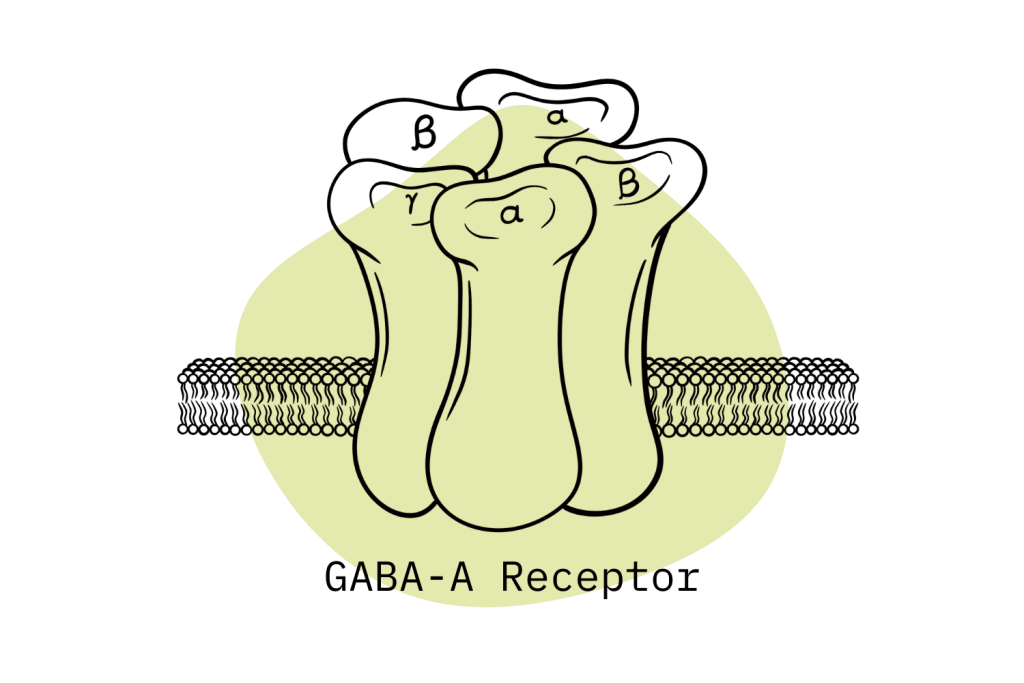
Is Cloxazolam Safe? Risks & Side-Effects
Cloxazolam shares a similar side effects profile as other benzodiazepine derivatives. The most common side effects are headaches, fatigue, and dizziness. Higher doses carry greater risks of more serious side effects like memory loss, physical or emotional outbursts, suicidal ideation, and vomiting.
Specific research on the side effects of cloxazolam and how it compares to other benzodiazepines in terms of safety are not yet completed. It’s unclear whether cloxazolam carries the same, greater, or lesser risk than popular benzodiazepines like alprazolam, clonazepam, or diazepam.
As with all benzodiazepines, cloxazolam has the potential for abuse. Frequent use of these powerful drugs can cause tolerance and dependency. Once dependence is formed, users experience withdrawal symptoms whenever the drug wears off. This can involve many uncomfortable symptoms, including sweating, tremors, agitation, abdominal cramps, seizure, confusion, and anxiety.
In severe cases, benzodiazepine withdrawal can even lead to seizures, coma, and death.
Common Side Effects of Cloxazolam
The most common side effects of cloxazolam are headaches, dizziness, and fatigue — but other side effects are also possible.
Common side effects of cloxazolam may include the following:
- Amnesia
- Ataxia
- Changes in libido
- Confusion
- Depression
- Drowsiness
- GI disturbances
- Headache
- Muscle weakness
- Sedation
- Slurred speech
- Tremors
- Urinary retention
- Vertigo
- Visual disturbances
Rare, but serious side effects of cloxazolam may include the following:
- Amnesia & memory loss
- Anaphylactic shock
- Blurred vision
- Coma
- Confusion
- Delirium & hallucinations
- Dementia
- Disinhibition & increased risk-taking behavior
- Liver damage
- Respiratory depression
- Slurring of speech
- Suicidal ideation
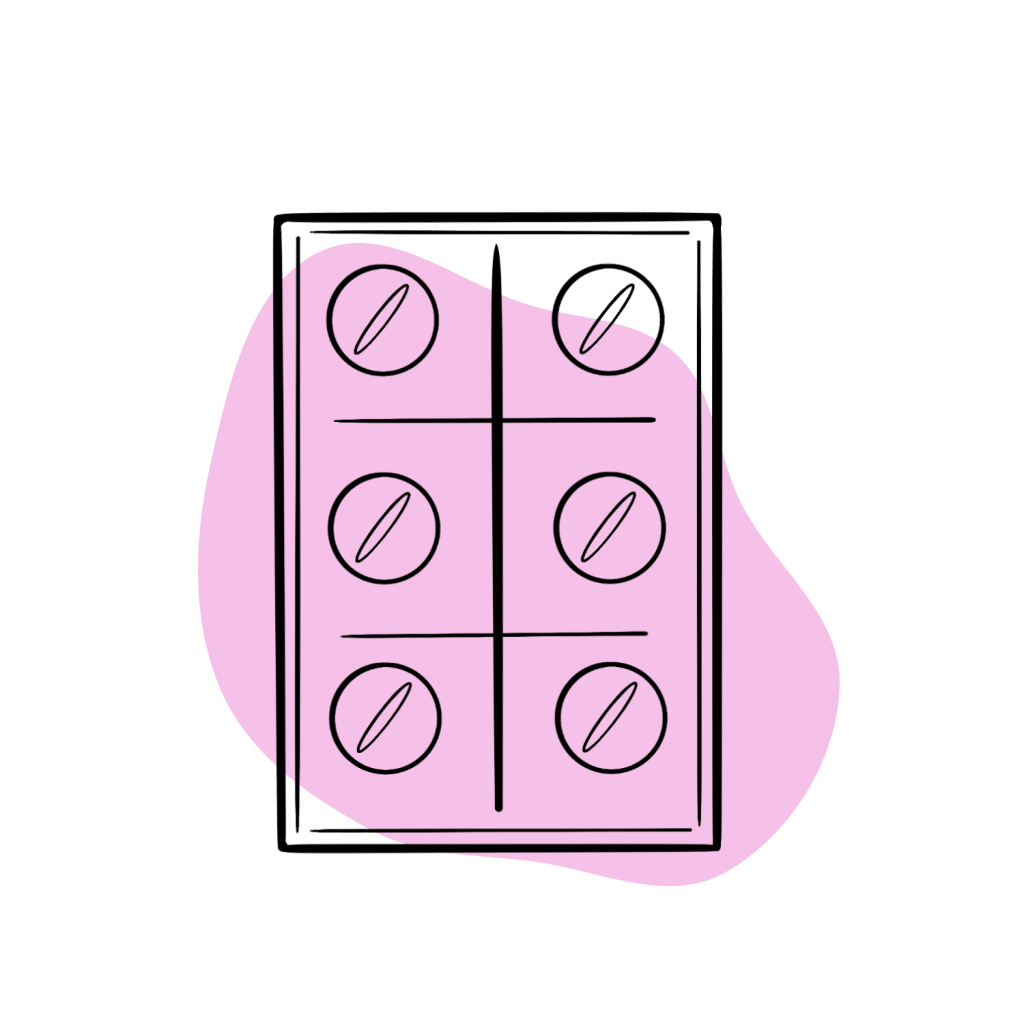
Harm Reduction: Cloxazolam
The drug is not approved for clinical use in the United States or Canada, and the long-term side effects of the drug are not well understood. While we recommend only those given a prescription for the medication to use it, it’s important for anybody taking benzodiazepines (legally or otherwise) to understand the fundamentals of using this drug as safely as possible.
The following harm reduction tips are intended to reduce the risk associated with cloxazolam.
- 🥣 Don’t mix — Mixing benzodiazepines with other depressants (alcohol, GHB, phenibut, barbiturates, opiates) can be fatal.
- ⏳ Take frequent breaks or plan for a short treatment span — Benzodiazepines can form dependence quickly, so it’s important to stop using the drug periodically.
- 🥄 Always stick to the proper dose — The dosage of benzos can vary substantially. Some drugs require 20 or 30 mg; others can be fatal in doses as low as 3 mg.
- 💊 Be aware of contraindications — Benzodiazepines are significantly more dangerous in older people or those with certain medical conditions.
- 🧪 Test your drugs — If ordering benzos from unregistered vendors (online or street vendors), order a benzo test kit to ensure your pills contain what you think they do.
- 💉 Never snort or inject benzos — Not only does this provide no advantage, but it’s also extremely dangerous. Benzos should be taken orally.
- 🌧 Recognize the signs of addiction — Early warning signs are feeling like you’re not “yourself” without the drug or hiding your habits from loved ones.
- ⚖️ Understand the laws where you live — In most parts of the world, benzodiazepines are only considered legal if given a prescription by a medical doctor.
- 📞 Know where to go if you need help — Help is available for benzodiazepine addiction; you just have to ask for it. Look up “addiction hotline” for more information where you live. (USA: 1-800-662-4357; Canada: 1-866-585-0445; UK: 0300-999-1212).
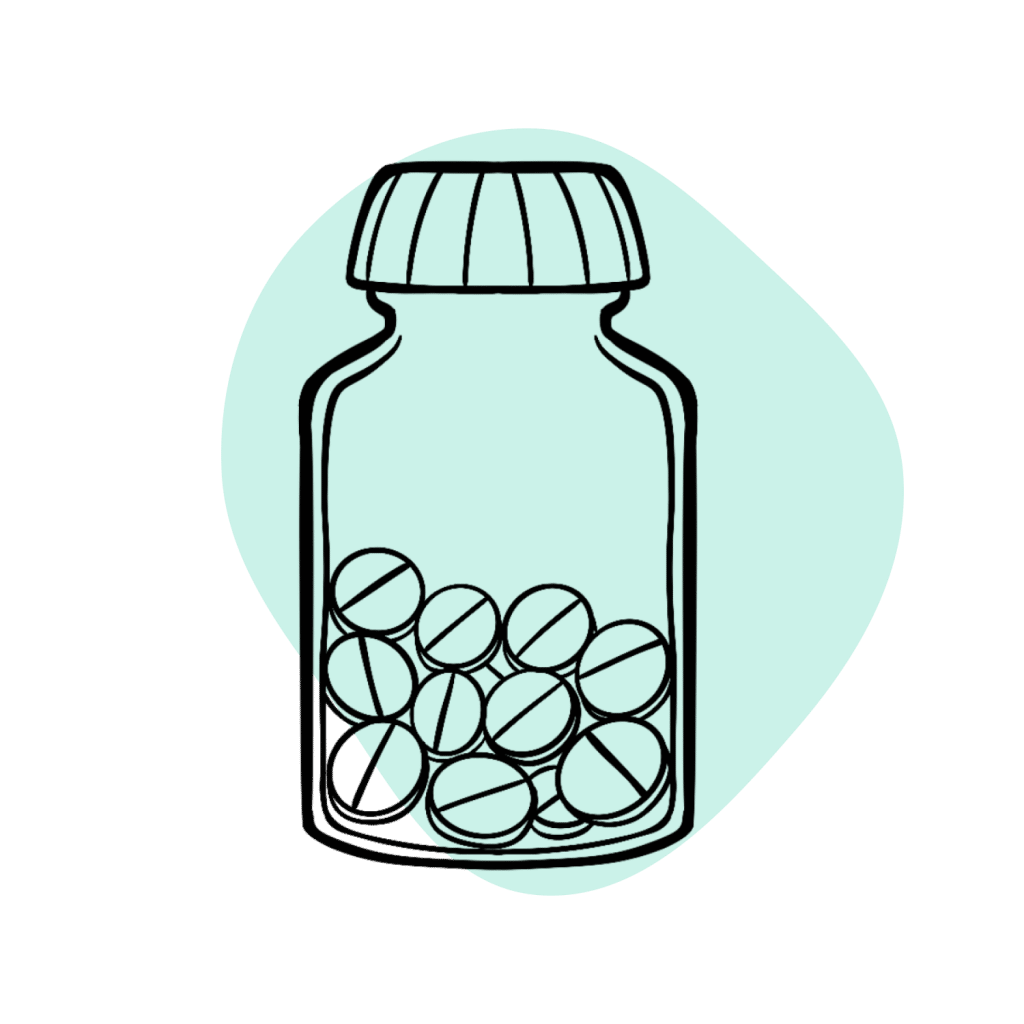
Similar Benzodiazepines
Cloxazolam is characterized as a long-acting oxazolobenzodiazepine. This makes it most similar to drugs like flutazolam (Coreminal) and mexazolam (Melex). Oxazolam and haloxazolam (Somelin) are also closely-related in terms of chemical structure but have a shorter duration of effects.
The effects of cloxazolam are similar to most typical benzodiazepines. The most popular members of this group are bromazepam (Lectopam), clonazepam (Klonopin), chlordiazepoxide (Librium), lorazepam (Ativan), and triazolam (Halcion).
Other benzodiazepines with similar effects include:
Phenazepam
Phenazepam (Phenzitat) is a long-acting drug similar to cloxazolam. The effect profile of this substance is reportedly similar to cloxazolam but has stronger intoxicating effects. This explains why phenazepam is so popular among designer drug users.
There are many common street names for this drug, including Bonsai, Bonsai Supersleep, Fenaz, Soviet Benzo, and Panda.
Etizolam
Etizolam (Depas) is a benzodiazepine derivative with effects most similar to alprazolam (Xanax). This drug was one of the first benzodiazepines to enter the designer drug market. At the time, only specific benzodiazepine medications were considered illegal — new substances like etizolam were created to side-step these laws to offer “legal” alternatives.
Today, etizolam and other designer benzodiazepines are considered illegal if used without a doctor’s prescription.
Metaclazepam
Metaclazepam (Talis) is a short-acting benzodiazepine derivative used to treat anxiety disorders with fewer sedative or muscle relaxant effects [4]. The effects of this drug are comparable to cloxazolam but with milder sedative side effects.
Alprazolam
Alprazolam (Xanax) is one of the most popular (and strongest) benzodiazepines on the market today.
Alprazolam is significantly stronger gram for gram than cloxazolam, but many report the effects of the two when taken at equivalent doses to be comparable.
Cloxazolam vs. Other Short To Intermediate-Acting Benzodiazepines [2,5]:
| Cloxazolam | Alprazolam | Bromazepam | Diazepam | Chlordiazepoxide | |
| Chemical composition: | Oxazolobenzodiazepine | Triazolobenzodiazepine | 1,4-benzodiazepine | 1,4-benzodiazepine | 1,4-benzodiazepine |
| Route of administration: | Oral | Oral | Oral | IV, IM | Oral, IV |
| Onset of action: | 45 to 60 minutes | 20 to 60 minutes | 60 minutes | 15 to 60 minutes | 1 to 2 hours (oral) |
| Peak concentration: | 1 to 4 hours | 1 to 2 hours | 1 to 4 hours | 1 to 1.5 hours | 2 hours |
| Duration of effects: | Long Acting | Short-acting (6 to 27 hours) | Intermediate-acting (8 to 19 hours) | Long-acting (20 to 80 hours) | Long-acting (36 to 200 hours) |
| Mechanism of action: | GABA-A receptor agonist | GABA-A receptor agonist | GABA-A receptor agonist | GABA-A receptor agonist | GABA-A receptor agonist |
| Medical Uses: | Anxiety disorders. Sleep disorder, seizure, muscle spasms, premedication before anesthesia | Panic disorders, anxiety disorders, insomnia | Anxiety disorder, alcohol withdrawal | Seizures, alcohol withdrawal, insomnia, muscle spasms, panic disorder, anxiety disorders | Panic disorders, alcohol withdrawal, anxiety disorders |
Natural Alternatives To Benzodiazepines
There are few natural alternatives that cause relaxation and sedation, like those of benzodiazepines.
Some natural alternatives to cloxazolam include:
1. Kava
Kava (Piper methysticum) is a traditional tea with multiple health benefits used for the treatment of anxiety, stress, and sleep problems. The study has shown that kava works by increasing the activity of GABA [6]. This mechanism is highly similar to benzodiazepine drugs like cloxazolam — albeit much milder.
2. Psychobiotics
Some specific types of bacteria are used to help to synthesize gamma amino butyric acid (GABA) [8]. It’s believed that probiotic supplements that contain these bacteria can be beneficial in the treatment of certain mental health conditions — including anxiety, depression, and sleep disorders.
These supplements take a long time to work, but those who use them claim the effects are much longer-lasting than with benzodiazepines.
3. Valerian
Valerian root (Valeriana officinalis) is traditionally used to treat anxiety and insomnia in western herbal medicine. Active ingredients in the plant target the GABA-A receptors in a similar way to benzodiazepine drugs. The effects of this plant are significant — it’s widely considered to be the closest natural alternative to synthetic benzo derivatives.
With that said, even the strongest plant-based anxiolytics are much milder than benzodiazepine drugs. With that comes a significant reduction in risk and abuse potential as well.
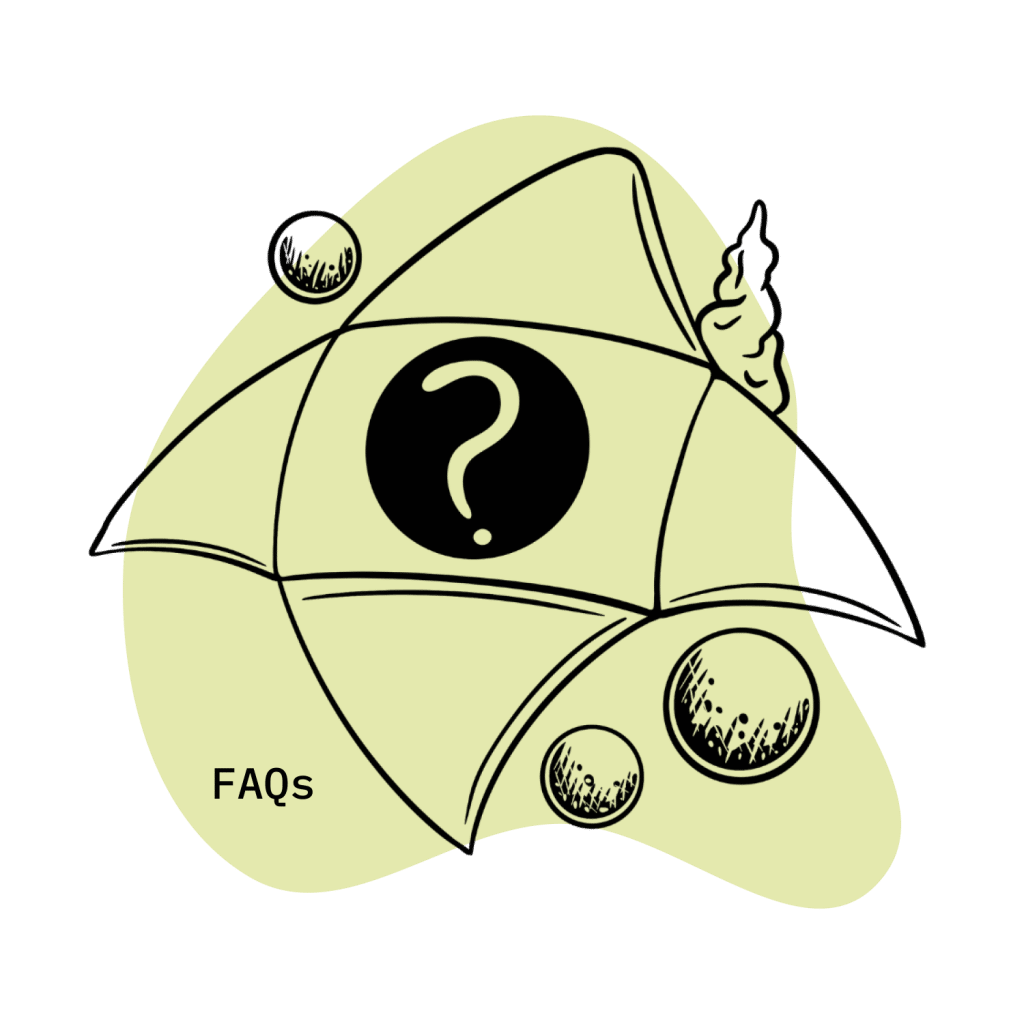
Cloxazolam FAQs
Is cloxazolam approved for medicinal use?
Cloxazolam is approved for marketing in a few countries like Argentina, Australia, Portugal, Belgium, Switzerland, Luxembourg, Germany, Taiwan, and Japan. However, the drug is not approved by the FDA for therapeutic use. The drug is classified under the schedule IV category in the United States and is mainly used for research purposes.
Do I need to take any precautions while taking cloxazolam?
There are certain special precautions required while taking the drug, and you need to inform your doctor about such conditions before taking the drug:
- Chronic pulmonary insufficiency
- Elderly or debilitated patients
- Muscle weakness
- Impaired liver or kidney function
- Drowsiness may affect skilled tasks
- Monitor cardio-respiratory function when used for deep sedation
- Patients with personality disorders or organic brain changes
- Pregnancy and lactation
- History of alcohol or drug addiction due to the risk of dependence
- Respiratory depression and hypotension
Is there a risk of dependence with cloxazolam?
There is a risk of dependence associated with cloxazolam, like other benzodiazepines, and abruptly stopping the drug can cause symptoms associated with benzodiazepine withdrawal, such as agitation, sweating, tremors, confusion, and anxiety. Dependence can be avoided by gradually reducing the dose of the drug before stopping it. Additionally, you should consider taking the lower doses and only taking the drug for a short period of time.
What are the activities to avoid while taking cloxazolam?
Activities that require attention and are associated with high risks, such as driving, operating heavy machinery, operating electrical equipment, and swimming, must be avoided while taking cloxazolam.
References:
- Ansseau, M., & von Frenckell, R. (1990). Controlled comparison of two anxiolytic benzodiazepines, cloxazolam and bromazepam. Neuropsychobiology, 24(1), 25-29.
- Murata, H., Kougo, K., Yasumura, A., Nakajima, E., & Shindo, H. (1973). Metabolism of cloxazolam. I. Distribution, excretion, and biotransformation in rats and mice. Chemical and Pharmaceutical Bulletin, 21(2), 404-414.
- Ito, M., Miyajima, T., Fujii, T., & Okuno, T. (2004). Cloxazolam treatment for patients with intractable epilepsy. Pediatric Neurology, 30(2), 111-114.
- Buschmann, G., Kühl, U. G., & Rohte, O. (1985). General pharmacology of the anxiolytic compound metaclazepam in comparison to other benzodiazepines. Arzneimittel-forschung, 35(11), 1643-1655.
- Griffin, C. E., Kaye, A. M., Bueno, F. R., & Kaye, A. D. (2013). Benzodiazepine pharmacology and central nervous system–mediated effects. Ochsner Journal, 13(2), 214-223.
- Chua, H. C., Christensen, E. T., Hoestgaard-Jensen, K., Hartiadi, L. Y., Ramzan, I., Jensen, A et al. (2016). Kavain, the major constituent of the anxiolytic kava extract, potentiates GABAA receptors: functional characteristics and molecular mechanism. PLoS One, 11(6), e0157700.
- Gohil, K. J., Patel, J. A., & Gajjar, A. K. (2010). Pharmacological review on Centella asiatica: a potential herbal cure-all. Indian journal of pharmaceutical sciences, 72(5), 546.
- Perez-Burgos A, Wang B, Mao YK, Mistry B, McVey Neufeld KA, Bienenstock J, Kunze W. Psychoactive bacteria Lactobacillus rhamnosus (JB-1) elicits rapid frequency facilitation in vagal afferents. Am J Physiol Gastrointest Liver Physiol. 2013 Jan 15;304(2):G211-20. DOI: 10.1152/ajpgi.00128.2012. Epub 2012 Nov 8.
- Boonstra, E., De Kleijn, R., Colzato, L. S., Alkemade, A., Forstmann, B. U., & Nieuwenhuis, S. (2015). Neurotransmitters as food supplements: the effects of GABA on brain and behavior. Frontiers in Psychology, 1520.

